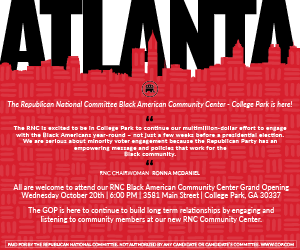on
By Kamille Whittaker
Who did Mayor Maynard Jackson think he was?
That was the collective sentiment toward Atlanta’s first African-American mayor when he ran and won on a platform of making Atlanta a “World Class City.” In 1974, Jackson told resistant city leadership that Atlanta would move forward with the expansion of then-Hartsfield Airport with 25 percent of all contracts set aside for minority firms. City-wide, between 1974 and 1981, the proportion of contracts awarded by the city to women and minorities increased from 1 percent to an average of 24 percent, worth more than $600 million. In those eight years, nine pieces of legislation designed to ensure minority and woman business participation were adopted by the city council, including a law requiring 25 percent of projects to be filled by minority- and women-owned firms.
“When you look back over the period of time spanning back to the early ‘70s when Maynard Jackson first became mayor, the city has played a very important role in the development and proliferation of small, minority- and women-owned businesses in this city. And the creation of the inclusionary program under Maynard Jackson really set the stage for minority and women small business owners to play a part in the principle economic activity that drives this city and so many other cities — capital investment in infrastructure, the construction of public facilities and certainly those projects that entail and require a public-private component or approach,” says Atlanta City Council President Ceasar Mitchell.
The public-private partnerships that materialized from Jackson’s policies served as a proving ground for minority- and women-owned small businesses. It provided the opportunity to create a “pooling affect,” according to Mitchell, which turned into fertile ground for networking and growth.
“I’ve been doing this since 1979,” says Lonnie Saboor manager of Small Business Finance for Invest Atlanta, the City of Atlanta’s economic development arm.
“Maynard Jackson established the Atlanta Economic Development Corporation and in 1981, the city’s business improvement loan fund program was expanded and turned over from city control to the AEDC. Up until that time, just a handful of small business development loans were made and only in certain areas. We expanded the target districts in the city to include areas like Auburn Avenue, Edgewood Avenue, Bankhead Highway, Martin Luther King Jr. Drive and Campbellton Road — areas where you see a lot of African-American businesses. To date, we’ve made over 600 loans to all businesses in the city and close to about 60-80 percent are made out to minorities and in particular, African-American business owners.”
According to Saboor, every administration presents a different angle to the push for public-private partnerships. Mayor Shirley Franklin, for example, focused on the business connections that could be parlayed through the City’s marketing and branding, beautification and environmental justice initiatives.
“Andrew Young was mayor when we got involved with building and restructuring Underground Atlanta in 1989. We basically financed the entire food court. About 33 businesses were funded and of those that were funded over 25 were African-American minority-owned businesses.”
Additionally, during the nationwide recession and a reduction in federal funds for cities, Young turned to international markets for investments in Atlanta, attracting 1,100 new businesses and $70 billion in investment, adding 1 million jobs to the region.
It was also during Young’s administration when the City of Atlanta became one of two cities nationally that was awarded Empowerment Zone funding of $100 million for small business development during the Clinton administration. This paved the way for the ADA’s current loan programs which offer between $50,000 and $100,000 in loans through funds with various criteria.
“Our newest program is called the New Markets Atlanta Capitalist Fund. As a development authority, we also operate the new markets tax credits program and have been able to make several successful projects off of that in terms of funding like the revolving loan fund, which was an initiative of Mayor Kasim Reed’s administration.”
But as robust as Atlanta’s public-private maneuvers have been over the decades, there has been considerable friction.
During Mayor Bill Campbell’s term, there was a lawsuit filed in Atlanta by the Southeastern Legal Foundation, calling the city’s minority and female business enterprise program ‘illegal and unconstitutional’ because it considers race and gender as factors in awarding contracts.
A decade prior, Rodney Keith Strong, Esq., now CEO of Griffin & Strong, P.C., Attorneys at Law and public policy consulting, was appointed director of the City of Atlanta’s Office of Contract Compliance by then-Mayor Young. The position is now held by Hubert Owens.
“I stayed in that position until February 1992, [and] it was during that period of time that a number of legal challenges were mounted against the City of Atlanta’s minority and women business enterprise program.”
A similar national challenge was pending concurrently at the U.S. Supreme Court — City of Richmond v J.A. Croson Co.
“What the supreme court basically said in that decision was that for a state or local government to have an Affirmative Action program that gave preferences to women and minority businesses, they had to meet the constitutional test of strict scrutiny and what that means is you have to have a compelling government interest and it has to be narrowly tailored. You just can’t say minorities have been discriminated against in the past and therefore you need programs that will redress this past discrimination.”
To meet the scrutiny standard, Strong explains that you had to demonstrate with specificity actual discrimination in the locality in which you exist and you have to prove both present discrimination and present effects of past discrimination which limit the ability of minority groups to do business.
“And then, if you’re going to have a program address those discriminatory activities and effects that you have identified then those means have to be drawn in such a way that non-minorities who were not necessarily the discriminators themselves would not be unduly burdened by your attempt to rectify this past discrimination.”
Prior to the Croson decision, and in the Jackson-Young Era, there had been court rulings that allowed government to implement set asides where only minority businesses could compete for certain contracts.
“The Croson decision made it very difficult to do pure set-aside programs. The City of Atlanta never had what they’d call a pure set-aside program but they had a very stringent goal-based program which basically said you had to have 35 percent minority participation on all city contracts. So, that meant you had to come in with 35 percent minorities as subcontractors or joint venture partners on your project. Once the Croson case came out, the City of Atlanta had to be very careful to respond to the constitutional dictates.”
And as the head of the Office of Contract Compliance at the time — Strong was the point person.
“The City of Atlanta had the most robust program out of any municipality in the country at that time so we felt a responsibility to set the tone for the national response to the court decision. I was able to convince Mayor Young to bring on a team of economists and attorneys to conduct a disparity study in which we analyzed the availability of the utilization of minority and women business by the City of Atlanta.”
The disparity study would include a historical analysis of discriminatory barriers to minority and women business access in Atlanta and conduct contemporary anecdotal evidence interviews and public hearings to demonstrate the actual effect of the statistical anomalies that we were able to uncover in their research, explains Strong.
“Through that process that we started in February of 1989, and completed in 1990, we got the Equal Business Opportunity Program approved by the City Council in 1991.We were trying to communicate to other municipalities nationwide that the programs hadn’t been outlawed and that it was possible to have a program as long as you went through the proper analysis to justify it. Almost every municipality in this country has an equal business opportunity program now that was modeled after the City of Atlanta.”
As such, Atlanta continues to be both a model and magnet for African-American entrepreneurs.
“People come here from all over the country and world — African and Caribbean entrepreneurs — who appreciate the vibrancy of the community even as the nature of business is changing,” says Dr. Charles Moses, interim dean of Clark Atlanta University’s School of Business Administration. “Maynard Jackson and Andrew Young were real trailblazers in terms of trying to provide entrepreneurs access to unprecedented amounts of contracts and opportunities. I think Atlanta still does a pretty good job in that regard. We also need to look at the private sector. We need African-American hotel owners, logistics companies, and B-2-B types of operations because that’s where the growth is; that’s where the opportunities are — businesses working directly with other providers. We’ve mastered working at the bottom of the supply chain; working with the customer. We need to continue the growth that was started by those trailblazers by looking forward.”
The Cloud, says Moses, is a shape shifter for business.
“As we go into the new millennium and doing more and more business in the cloud, we find that business is not so much a place phenomenon as it used to be. Those kinds of businesses are more sophisticated so there is a need for business instrumentality that facilitates the development of those kinds of businesses here in Atlanta. I’m talking about things like clusters, enterprise zones, free trade zones, that are going to allow money and ideas to come together to produce goods and services for the global marketplace,” says Moses.
“We’ve launched a Start-up Atlanta initiative through Invest Atlanta where we’re working with incubators, angel investors and venture capitalists to begin to turn Atlanta into the new Silicon Valley of the nation,” says Saboor of Invest Atlanta’s newest initiatives. “Right now, companies that are looking for venture capital investment end up going elsewhere. So we’re finding ways of making them aware of all these different resources that can help them grow and expand, and put the connections in place with the venture capital market right here in the Atlanta area. This way we can benefit from the job growth. I see the incubators, the co-ops, and venture capital funds that are seeding start-up companies as being a very important part of minority small business development — and how it will be trending going forward.”
The trend implies an evolving role for the city.
“In the future, the city won’t necessarily be the quarterback as it was in the past, it will be the facilitator and it will play an enabling role,” predicts Moses. “For example, the government can help by keeping regulations low, making it easy for businesses to get started; they can be a convener and a catalyst for attracting pools of capital and talent, and try to address specific kinds of initiatives. For example, when they got ready to build the international terminal at the airport they had a pretty good program to attract minority owned businesses.”
To date under Mayor Reed’s direction, 44 percent of the city’s $1.6 billion bond underwriting for airport projects earlier this year went to minority-owned firms. And Invest Atlanta has announced its role in ensuring at least 31 percent participation by woman- and minority-owned businesses in the construction of the Atlanta Falcons’ new stadium.
Beyond the City, Moses calls minority business support organizations like Georgia Minority Supplier Development Council and the Atlanta Business League, “second to none.”
“One could only imagine what our city would look like from the standpoint of minority and women small business development if there were no programs to give opportunities through the public sector in an environment where you didn’t have as much commitment and inclusion on the private side,” says Mitchell. “And so, I think the programs have made a significant difference in terms of how we even look today as a city. Today, we enjoy the legacy of an inclusionary program that was started that required a lot of courage on the part of the political leadership and a willing partnership on the part of the private sector to not fight it in a way that would destroy it when it was first created. I think Atlanta today is a product of that courage and collaboration from 40 years ago.”
Turns out, Mayor Maynard Jackson was a maverick.
Additional reasearch by Ashia Gallo and
Tiffany Pennamon
Join our email list to stay connected.
Matters of the Mind
Who’s that Girl? (Well … Woman)






Pingback: 'It's Complicated' podcast: Balancing equity with economic development - Atlanta Business Chronicle - Washington News Post
Pingback: 'It's Complicated' podcast: Balancing equity with economic development - Atlanta Business Chronicle - Daily Post USA